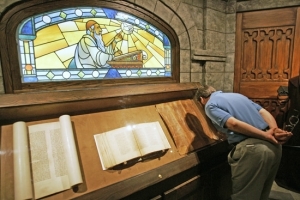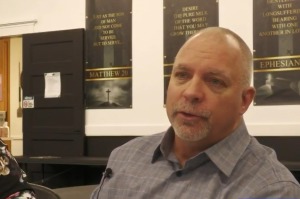Small Groups, Inspiring Pastors Impact Church Vitality
Churches with a high number of small groups, effective lay leadership, faithful pastors, and both traditional and contemporary services tend to be the healthiest, a new study shows.
The "drivers of vitality" were identified through surveys conducted by an independent firm for The United Methodist Church, which is seeking to reverse its declining membership.
"We've taken a data-driven approach to identify what works for thriving congregations large and small, both rural and urban, all over the U.S.," said Bishop Gregory V. Palmer, chair of the denomination's Call to Action committee, in a statement. "While there's no silver bullet, we believe these findings can lead to vitality for many more congregations."
The Call To Action Steering Team was created by UMC bishops to "refashion and reposition" the church for the 21st century. In Fall 2010, the team will bring forward a plan that will lead to the reordering of the life of the nearly 8 million-member denomination.
Findings from the newly released report, "The Vital Congregations Research Project," revealed that the main drivers of vitality (measured by attendance, growth and engagement) were consistent regardless of church size, predominant ethnicity and geographic location.
More specifically, "high vital churches" that have an average worship attendance of between 35 and 99 average 5.1 small groups, whereas "low vital churches" with the same attendance has 4.5 small groups. Among larger churches with an attendance of at least 350, high vital churches have 37.5 small groups while low vital churches average 22.5 small groups.
Overall, 60 percent of churches with over five small groups have high vitality compared to only 19 percent of churches with three or fewer groups.
More vital churches also tend to have more programs for children and for youth. The study, however, found that the number of programs for young adults and adults does not have a significant impact on vitality.
Churches with effective lay leadership are 84 percent more likely to be a high vital church, 48 percent more likely to be a high attendance church, 54 percent more likely to be a high growth church, and 30 percent more likely to be a high engagement church. And what drives laity effectiveness is demonstrating vital personal faith, rotating lay leadership, and more attendees serving as lay leaders.
The research project also found that pastors have a strong impact on the vitality of the church. Pastors who were rated as effective at inspiring the congregation are more likely to have high vital churches. Additionally, pastors that focus on developing, coaching and mentoring to enable laity leadership to improve performance; influence the actions and behaviors of others to accomplish changes in the local church; and propel the local church to set and achieve significant goals tend to have high vital churches.
Also, the longer the pastor leads the church, the more likely the church has high vitality.
Interestingly, preaching in traditional worship services at high vital churches tends to be more topical and less based on the lectionary than in churches with relatively low vitality.
In other findings, 43 percent of churches that have both traditional and contemporary services are high vital churches. Meanwhile, only 31 percent of churches that provide traditional services only and 21 percent of churches with contemporary services only have high vitality.
Data for the research project was collected in May by Towers Watson consulting firm. The findings will be used to develop recommendations that will map out the UMC's future.





























